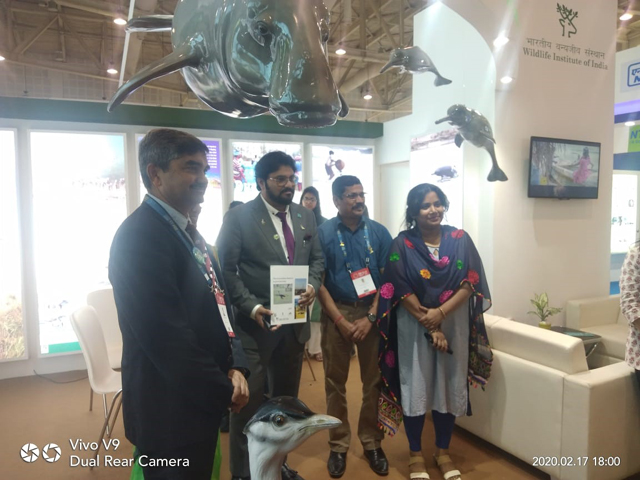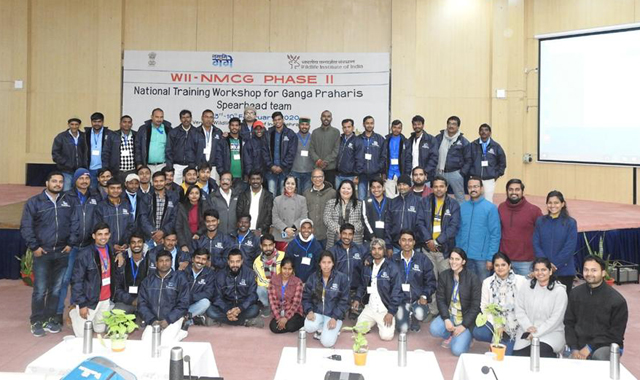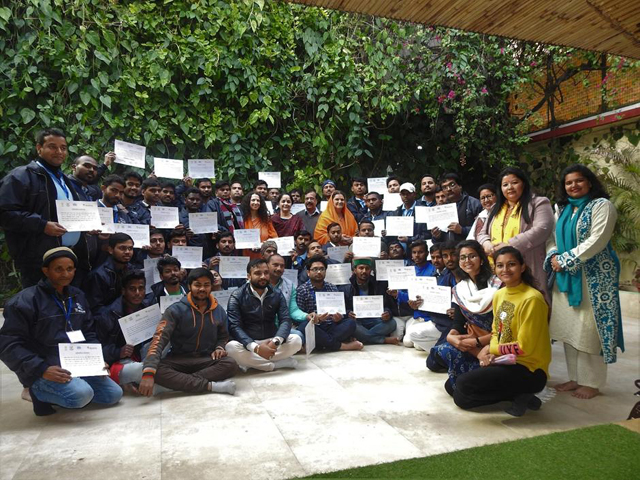February 2020
Thirteenth Conference of Parties of Convention on Migratory Species of wild animals (CMS CoP13)
|
Wildlife Institute of India has showcased the conservation efforts of India with respect to several threatened migratory species such as Dugongs, Great Indian Bustard, Gangetic Dolphin, Amur Falcon, Snow Leopard, etc. in its Exhibition Hall. WII stall is one of the most visited stalls of the Conference by delegates and students. WII has conducted a side event on behalf of MoEF&CC with partnership of CMFRI and WTI on ‘Marine Animals Conservation Programme: Sea turtles, whale shark, Arabian Sea Humpback Whales and Dugongs in India’ on 19th February, 2020. This side event was Co-chaired by Shri Soumitra Dasgupta, IGF(WL), MoEFCC, GoI with Dr. Dhananjay Mohan, Director, WII. Inaugurating the side event, Shri Dasgupta reiterated the commitment of the Government of India in conservation of migratory marine animals and he told that the marine conservation programme is one of the priority of the government. He has also mentioned that the MoEF&CC is going to release the National Action Plan of marine turtles and also policies related to marine animals stranding. The speakers of the programme include Dr. Suresh Kumar (WII), Dr. Dipani Sutaria (Marine Biologist) and Mr Sajan John (WTI). The programme was coordinated by Dr Bitapi Sinha, WII. Dr. K. Sivakumar, who organized this side event highlighted the India’s efforts in conservation of marine migratory animals especially the dugongs and their habitats. Chief Wildlife Wardens and their representatives from various coastal states and UTs have participated in the discussion and highlighted the conservation efforts of their respective states and UTs. Tamil Nadu, Gujarat, West Bengal, Andhra Pradesh, Lakshadweep, Karnataka, Kerala and Maharashtra state officials participated in this side event along with delegates from various international organizations such as IWC, GOBI,, CMS Dugong MoU, etc and India. Dr. Dhananjay Mohan, Director, WII in his closing address highlighted the true nature of migration of marine animals and stressed the importance of having a better conservation strategy for these migratory marine animals and their habitats. He has also appreciated the efforts of coastal States and UTs in conservation of marine animals and their habitts such as dugongs, sea turtles, whale sharks, etc. He thanked all delegates especially the forest department officials for their supports to WII. Further, WII especially the NMCG Team has organized a side event at the Indian Pavilion and showcased the conservation efforts of WII with respect to migratory species of Ganges. More than 20 scientists and researchers from WII participated in this conference and spoken in the various side events organized at the Conference. Dr S. Sathyakumar and Dr K. Sivakumar have also participated in the Working Group Meetings of CMS CoP 13 of Terrestrial and Aquatic species respectively along with officials from MoEF&CC. |
|
|
 |
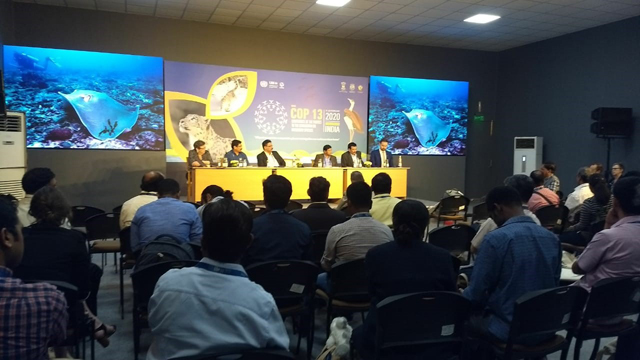 |
Last Updated: May 12, 2020
One-week compulsory training course for Indian Forest Service Officers on “Management of Coastal and Marine Biodiversity in India: Challenges and Prospects” On 10-14 February, 2020 at Port Blair, Andaman and Nicobar Islands
|
One week refresher training course for Indian Forest Officers on “Management of Coastal and Marine Biodiversity in India: Challenges and Prospect” was inaugurated at Andaman & Nicobar Islands on 10th February, 2020 by Mr. Tarun Coomar, PCCF of Andaman and Nicobar Islands and Dr V.B. Mathur, Chairperson, National Biodiversity Authority. This one week course was jointly organized from 10-14th February 2020 by Wildlife Institute of India in association with Department of Environment & Forest, Andaman & Nicobar Islands. The course was started with 30 IFS officers from 11 state cadres. Inaugural function was attended by various departments including the Zoological Survey of India. The training was initiated with a comprehensive introduction to the coastal and marine biodiversity conservation in India by Dr. K. Sivakumar, Course Director. He has also elaborated upon the CAMPA funded- Species Recovery Programme. Dr. V. B. Mathur presented the strategies for developing synergies between biodiversity related conventions and legal instruments: challenges and way ahead. Mr N. Vasudevan, APCCF, Maharashtra has shared his experiences an efforts of the Maharashtra in conservation of coastal and marine biodiversity including creation of Marine Biodiversity Foundation. He also shared multiple images taken at the field to describe the threats to the marine biodiversity of the region. The last session of the day was taken by Dr. Sivakumar on Endangered Species Recovery Programmes of India and shared some of the best practices followed in India. The participants interacted with the resource persons on various aspects on marine biodiversity management in India between the sessions on the first day. It is planned to visit the Mahatma Gandhi Marine National Park (MGMNP), Wandoor, Jhansi Rani Marine National Park and Baratang mangrove forests on coming days. In India, there are multiple governance frameworks and structures that administer the coastal and marine environment. While these are intended to have positive outcomes, overlapping jurisdictions, contradictory mandates and limited coordination hinders multiple agencies from working effectively in coastal India. Management agencies in India are still having limited understanding about management of multiple use coastal and marine areas. Given this scenario, the challenge lies in reconciling livelihood needs and development vis-a-vis conservation. Therefore, this course was conducted to address the following issues:
|
 |
 |
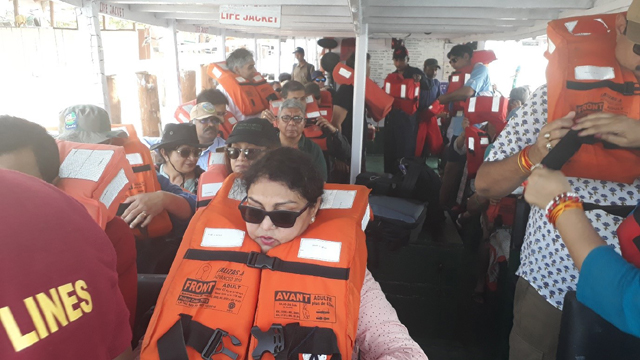 |
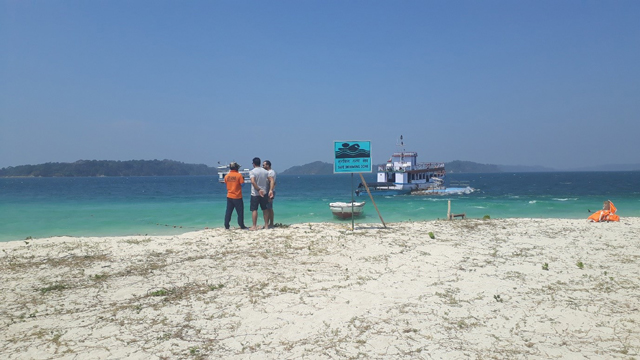 |
Last Updated: February 14, 2020
National Training Programme for Ganga Praharis Spearhead Team
|
3rd to 10th February, 2020 Under the Wildlife Institute of India-National Mission for Clean Mission Ganga project ‘Biodiversity Conservation Initiative Phase II, 8 days National training programme for the spearhead team of Ganga Praharis from the five Ganga States was conducted at the Wildlife Institute of India (WII), from the 3rd to 10th February 2020. The objective of the training was to train the spearhead team of Ganga Praharis-Guardians of the Ganga, who will lead the conservation activities in their respective areas specially conducting cleanliness and plantation drive, volunteering with State forest departments in population census of different aquatic species of Ganga River and mobilization of school children at their respective states. 50 selected Ganga Praharis from Uttarakhand, Uttar Pradesh, Bihar, Jharkhand and West Bengal had participated. These participants have been actively involved with the project as Ganga Praharis for past three years (since 2017) hence; have been selected to be the spearheads along the main stem Ganga and its selected tributaries.
On day 1st detailed information on technical issues pertaining to biodiversity conservation activities were shared with the participants to enable them to lead and carry forward the Ganga conservation activities. During the inaugural session of the training workshop Dr. Sangeeta Angom, Scientist & Training coordinator welcomed the participants to the training programme and encouraged them to carry forward and continue the cleanliness and conservation activities in their respective states. The participants introduced themselves. Thereafter, Dr. Ruchi Badola, Scientist G & Project Investigator gave a brief overview about the conservation activities of Ganga Phararis at various locations along the Ganga River. Dr. S. A. Hussain, Scientist G & Project Investigator requested that Ganga Praharis to be the torch bearers for Ganga biodiversity conservation and supervise the ground level activities in main stem Ganga and its major tributaries. Towards the end the Ganga Praharis shared their experiences and expressed gratitude to the NMCG-WII project, has given them a world-wide recognition and invoked in them a sense of belongingness towards the natural heritage of the country. Dr. Niladri Dasgupta, Project Scientist, informed the participants about the monitoring techniques of aquatic species and their ecological importance in maintenance of a healthy ecosystem. Environmental laws are an essential part of the conservation programme and play a key role for the first responders on field. To sensitize the participants on these legal implications on handling of the schedule species. Dr. Rakesh Kumar, Trustee and Scientific Advisor, Legal Initiative for Forest and Environment, New Delhi gave an overview of laws protecting environment, forest and wildlife of India. Special focus was made to make the participants aware of the legal procedures for a common man. The Day 2nd of the training further proceeded with a lecture on understanding the concept and significance of Village Level Micro Plan along the Ganga river. There was an interactive session dedicated to the formulation and identification of various problems which are faced by the Ganga River. In this all the participants were divided in to teams based on their area of districts and blocks. During the activity they were asked to identify one major issue, challenges and its root cause on the decline of biodiversity in any protected areas. Apart from this they were asked to identify the key stakeholders with they have been working for the rejuvenation of the river. Open ended questionnaires were distributed which aim at identifying the key aspects of village level micro planning. Further there was a session on Digital Micro Planing and usage of mobile application on the same. On the second day, the Spearhead Team of Ganga Praharis visited the Forensic Laboratory where in the experts guided them on the identification and differentiation of poaching samples and fake samples of different species procedures. In addition to this another important lecture that was delivered by Dr. V. P Uniyal, on the “Insect as Bioindicators”, which covered the significance of various insects including earthworms, beetles, spiders and so on for the balanced ecological system on the river basin. The day 3rd of the event initiated with a visit to Dehradun Zoo. Housing numerous types of aquatic as well as terrestrial fauna that are put on display attracts the attention of visitors of all age groups. After a brief recapitulation about the Zoo the event proceeded with a lecture on Rescue and Rehabilitation Techniques of different species particularly in times of a distress and injury. Demonstration was given by Veterinarian expert, Dr. Anupam Shrivastav and Dr. Vikramjit on rescuing procedure that is to be followed to relocate the eggs of turtles during any natural calamity. Post lunch, the training day began by a visit to Forest Research Institute of India, a premier research institution in India having three fascinating museums namely Timber Museum, Silviculture Museum and the Forest Pathology Museum. Here in all the Ganga Praharis observed the rich biodiversity not only of the rare species but also the tree history of which dates back to thousands of years and are kept for display for visitors. The day 4th was a more of a Techno centric wherein the event began with a lecture on “Space Technology and Ganga Rejuvenation”. The expert from Namami Gange introduced the working of Bhuwan Ganga app through a video graphic display. This app enables a Ganga Prahari to report any issue pertaining to the Holy River. Later on the participants were made familiar with Aqualife Data App and its usage focusing on the Digital Micro Planning for Villages on the banks of the Ganga River, this will help the Ganga Praharis in identification of the aspects which they have to focus on in order to achieve the goal of clean Ganga. Both these aforesaid apps are formulated by WII. In the later part of the day all the Ganga Praharis were asked to prepare a micro plan for their respective state during an interactive activity session. On day 5th of the participants were taken for field exposure to Asan Conservation Reserve. During this visit the Ganga Prahari’s were addressed by Dr. Gopi G.V. on techniques and methods of Bird Watching, Wetland Management and Conservation of the habitat. This experience will enable the participants to adopt and implement the best practices in conserving of wetland along the Ganga River. After returning to the Wildlife Institute of India, Ganga Prahari’s had an opportunity to interact with London based Pravasi Ganga Prahari, Dr. Raj Amin, who is associated with Zoological Society of London. Here in they interacted about the activities which Ganga Prahari and Pravasi Ganga Prahari’s can take up together for the biodiversity conservation of the Holy Ganga. Dr. Amin also shared his opinion about this initiative and the reason he himself joined this initiative describing the significance of the role of Ganga Prahari and its importance.
On day 6th of the participants had an interactive session wherein they were divided state wise in to teams and each team was asked to devise solutions to the problems identified by them during the Village Level Micro Planning exercise. Ms. Hemlata Khanduri, Dr. Sangeeta Angom and Dr. Pariva Dobriyal interacted with all the teams and guided them with reasonable solutions to achieve the desired conservation goals. In the later part of the day the team were taken to Himalayan Environmental Education and Conservation Organization, (HESCO) Dehradun. The team had interactions with Dr. Kiran Negi and other experts in which the participants were told about village development and restoration techniques like spring and river water recharge, low cost bridge for better access, water-flour mills and fruit processing plant. This experience will allow the trained cadre to mobilise rural community through implementation of alternative livelihood models. Alternative livelihood will enable the local community to decrease their level of dependency on fishing and allied businesses for their socio economic survival. On the 7th day the Ganga Prahari Spearhead Team were taken to Bharwakatal village in Maldevta, Dehradun. This village happens to be one of the few planned villages in our country. Besides few lectures from the alternate livelihood experts from HESCO, the team members witnessed the various alternative livelihood models that are in practice in this village for instance there is a Women Self Help Group which has brought financial inclusion and financial literacy among the women, like wise they have set up some common facility centres where in organic comestibles are prepared and sold. In addition to this they have been practicing Shree Daan, a concept of donation chain for resources mobilization and development in the nearby area. This real life exposure will enable the Spearhead Team to propagate and practice similar sustainable village development models and bring about prosperity in their respective areas. The day concluded with a Ganga Aarti at Parmarth Niketan, Rishikesh. Ganga Praharis were introduced to the devotees from across the world during this magnificent evening, giving them the opportunity to share their learnings and ideas with the people around. On the 8th and the final day of the training began with a Cleanliness Drive at Parmarth Niketan in which all the Ganga Praharis offered Shram Daan as part of this mass cleanliness drive. To mark the culmination of the training programme a Valedictory ceremony was held at Parmarth Niketan, Rishikesh. During this ceremony certificates were distributed to the participants after the successful completion of their training on 10-02-2020.
|
Last Updated: July 6, 2020

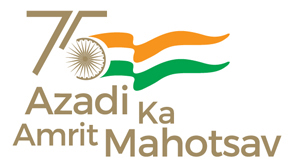
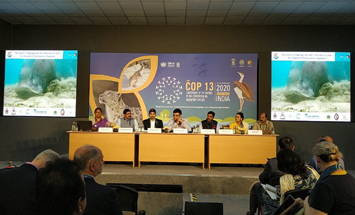 “Migratory species connect the planet and together we welcome them home”
“Migratory species connect the planet and together we welcome them home”